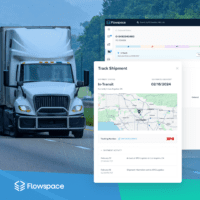Those in the supply chain industry are probably familiar with third-party logistics providers, commonly referred to as 3PLs. However, you’d be forgiven for lack of familiarity with fourth party logistics providers, which are not as common and are relatively new to the industry.
Critical to every decision-maker in the supply chain is the ability to make informed decisions, especially when choosing logistics providers. If you’re a decision maker, then it’s your job to understand the differences between a 3PL and a 4PL.
What is a 3PL?
A 3PL is a third-party logistics provider that provides outsourced logistics services to companies in need of supply chain management. In other words, a 3PL is a service you hire to manage the various functions of your supply chain, such as:
- Sourcing Transportation
- Inventory Storage & Management
- Freight Forwarding
- Shipping/Receiving & Distribution
- Customs Brokerage
- Cross-docking
- Picking and packing
3PLs are not new and are utilized to some extent by nearly every corporation that ships and receives freight. 3PLs increase the speed of local and international distribution and provide the added benefit of multiple storage locations.
3PLs are a terrific choice for small-to-medium-sized businesses looking to take advantage of an external logistics company’s operational power while maintaining overall control over their supply chain.
What is a 4PL?
A 4PL, or fourth-party logistics provider manages every part of a supply chain, and typically serves as the single point-of-contact for all parties to provide end-to-end transparency.
4PLs assemble and combine their resources, capabilities, and technology with those of complementary service providers (often 3PLs) to deliver a fully comprehensive supply chain solution.
A 4PL is a 3PL with greater capabilities, resources, and visibility. Where a 3PL is limited in operational ability, a 4PL goes a step further by managing every aspect of the supply chain, from sourcing carriers and warehousing, to reverse logistics and global distribution
What’s the Difference?
The differences between a 3PL and 4PL are best understood in the context of a wedding. You can think of a 4PL as a wedding planner and the company as the bride and groom.
The bride and groom (company) outsource management of their wedding (supply chain) to a wedding planner (4PL) who manages vendors (3PLs, warehousing, transportation, etc.) and provides high-level strategic insight regarding the best ways to run a wedding.
Another way to understand the difference between a 3PL and 4PL is in the capabilities and resources that they can offer your supply chain. A 3PL will manage oversight, but its services will fall short of strategic insight and management over the entire supply chain.
If a 3PL does not offer a service, it will likely refer you to another service provider with whom they have a pre-established arrangement or contract.
However, if a 4PL is managing your supply chain and deems a service to be beneficial, it will secure that service, regardless of whether they directly offer that particular service themselves; similar to a general contractor outsourcing roles to subcontractors on a construction project.
For more information on choosing the right 3PL for your business check out “How To Choose The Right Third Party Logistics Provider.”
If you deem that your supply chain could benefit from a complete overhaul, including updated a cloud WMS and TMS software, total vendor management and performance analytics, then a 4PL is better suited to meet your needs.
Let Flowspace handle all your warehousing needs today with a free quote!





